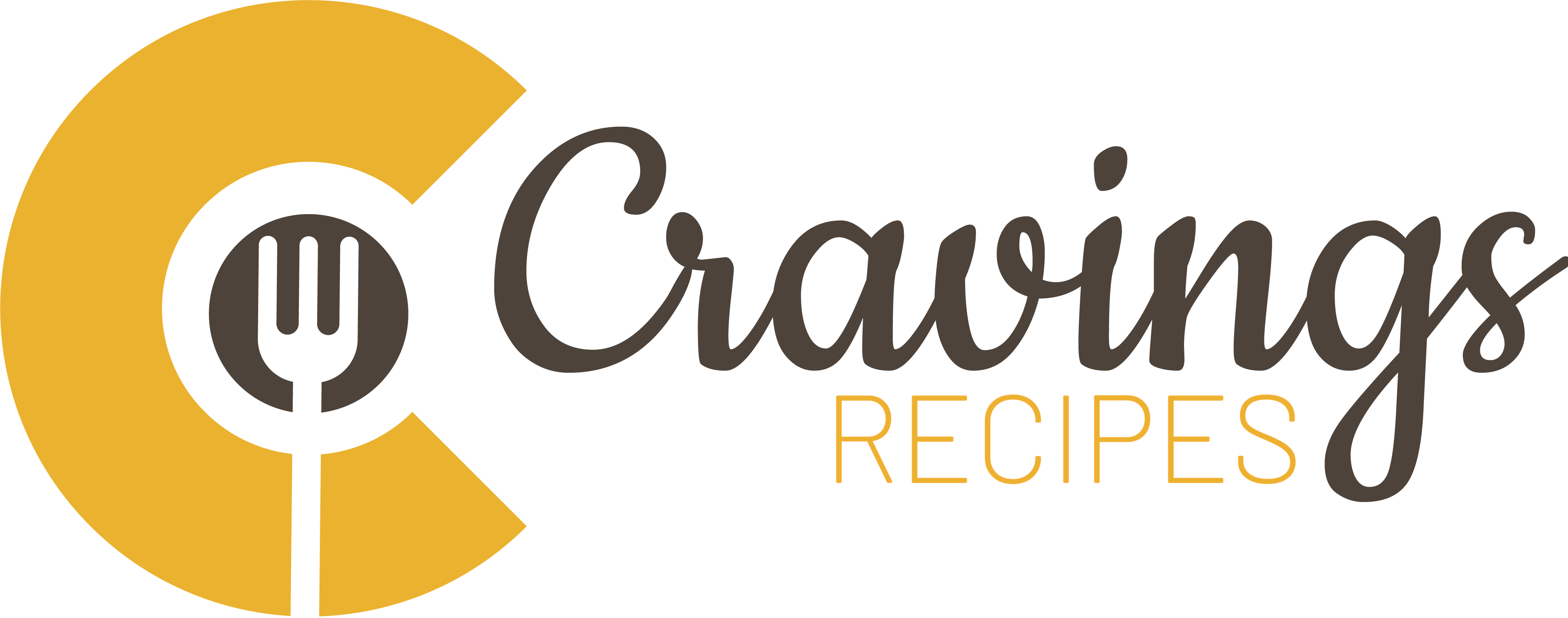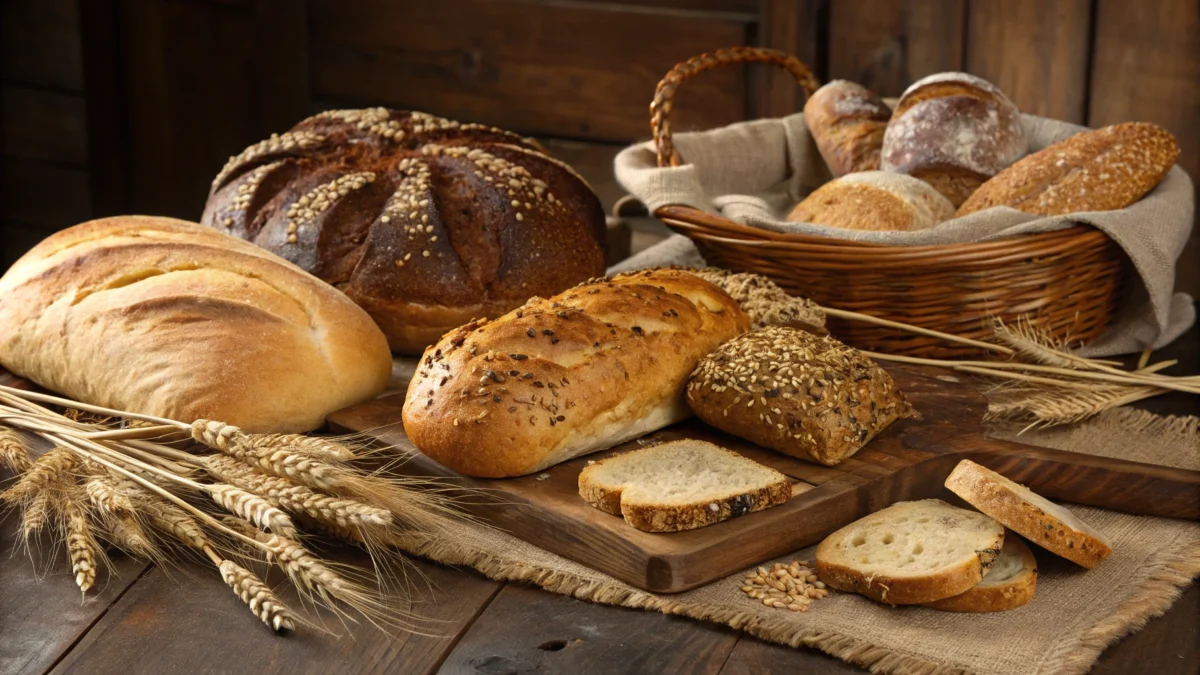The Basics of Breadmaking
Breadmaking is an age-old craft that has many benefits, but one key question remains: Is it cheaper to make bread at home?. But is it cheaper to make bread at home? To start, you only need a few basic ingredients: flour, water, yeast, and salt. These items are staples in most kitchens, making breadmaking accessible to almost everyone.
The process begins with combining ingredients into dough, followed by kneading to develop gluten. Next comes proofing, where the dough rises as yeast ferments. Finally, the dough is baked to perfection, resulting in warm, fresh bread.
Key equipment, such as mixing bowls, measuring cups, and an oven, is essential. However, tools like bread machines or stand mixers can make the process more efficient. By mastering these techniques, you’ll not only enjoy homemade bread but also understand its potential savings.
If you want to make or view the recipe for homemade bread, just click on the link below to get started.
Understanding the Costs: Is It Cheaper to Make Bread?
One of the most common questions is, Is it cheaper to make bread when factoring in ingredient and equipment costs? The answer depends on several factors. First, consider ingredient costs. A standard loaf requires:
- Flour: A 5-pound bag of all-purpose flour costs around $3–$4 and can yield 6–7 loaves.
- Yeast: Buying yeast in bulk reduces the cost significantly.
- Salt and Water: These are negligible expenses.
To truly answer the question, Is it cheaper to make bread, consider that homemade loaves often cost $0.50 to $1 each, compared to store-bought bread priced at $2 to $5 or more. Equipment, like a bread machine, may seem costly upfront but pays off over time. Utility costs, including electricity for baking, should also be considered, although they are relatively low.
Thus, making bread at home often proves more economical, especially when you bake regularly.
Benefits of Homemade Bread: Why It’s Cheaper to Make Bread
The benefits of homemade bread often make the answer to Is it cheaper to make bread a resounding yes. Is it cheaper to make bread? Yes, but beyond cost savings, homemade bread also offers quality, control, and unmatched satisfaction. By baking your own bread, you gain the ability to tailor it to your preferences, ensuring every loaf meets your personal and nutritional standards.
Health Benefits
Homemade bread is a healthier alternative to many store-bought options, which often contain preservatives, artificial flavors, and unnecessary additives to extend shelf life. By making your own bread, you can keep the ingredient list short and simple. Moreover, it allows you to use nutrient-rich flours, such as whole-grain, rye, or gluten-free options, catering to specific dietary needs or restrictions. You can also control the amount of salt, sugar, or fat, creating a loaf that’s not only delicious but also aligned with your health goals.
For individuals managing food allergies or sensitivities, homemade bread ensures complete transparency about what goes into your food, providing peace of mind.
Customization
One of the greatest joys of breadmaking is the creative freedom it offers. Unlike store-bought bread, where choices are limited to what’s on the shelf, homemade bread can be customized endlessly. You can experiment with flavors by incorporating herbs like rosemary or thyme, add seeds such as chia or flax for added nutrition, or include sweet elements like raisins or honey. Additionally, you can adjust the texture by tweaking the hydration level or kneading techniques, creating anything from a dense whole-grain loaf to a light, airy ciabatta.
This ability to experiment makes breadmaking a hobby as much as a practical skill, giving every loaf a personal touch that enhances its value.
Sustainability
Baking your own bread also has a positive impact on the environment. Store-bought bread often comes in plastic packaging, contributing to waste. By baking at home, you eliminate the need for single-use packaging, reducing your carbon footprint. Furthermore, buying ingredients like flour and yeast in bulk minimizes packaging waste and lowers transportation emissions associated with frequent trips to the store for pre-packaged bread.
Supporting local suppliers for your ingredients can further enhance sustainability, as it reduces the environmental costs of shipping and promotes regional agriculture.
Satisfaction and Enjoyment
The process of baking bread is as rewarding as the end product itself. From kneading the dough to the intoxicating aroma of freshly baked bread filling your home, the experience brings immense satisfaction. Baking bread allows you to slow down, connect with an age-old tradition, and appreciate the effort that goes into creating something by hand.
For many, breadmaking becomes a calming and meditative ritual, offering a break from the hustle of daily life. Sharing your homemade bread with family and friends also fosters connection and pride, making it more than just a task—it becomes a cherished activity.
In summary, the benefits of making your own bread extend well beyond financial savings. It’s an opportunity to improve your health, reduce your environmental impact, and enjoy a creative and deeply satisfying experience.
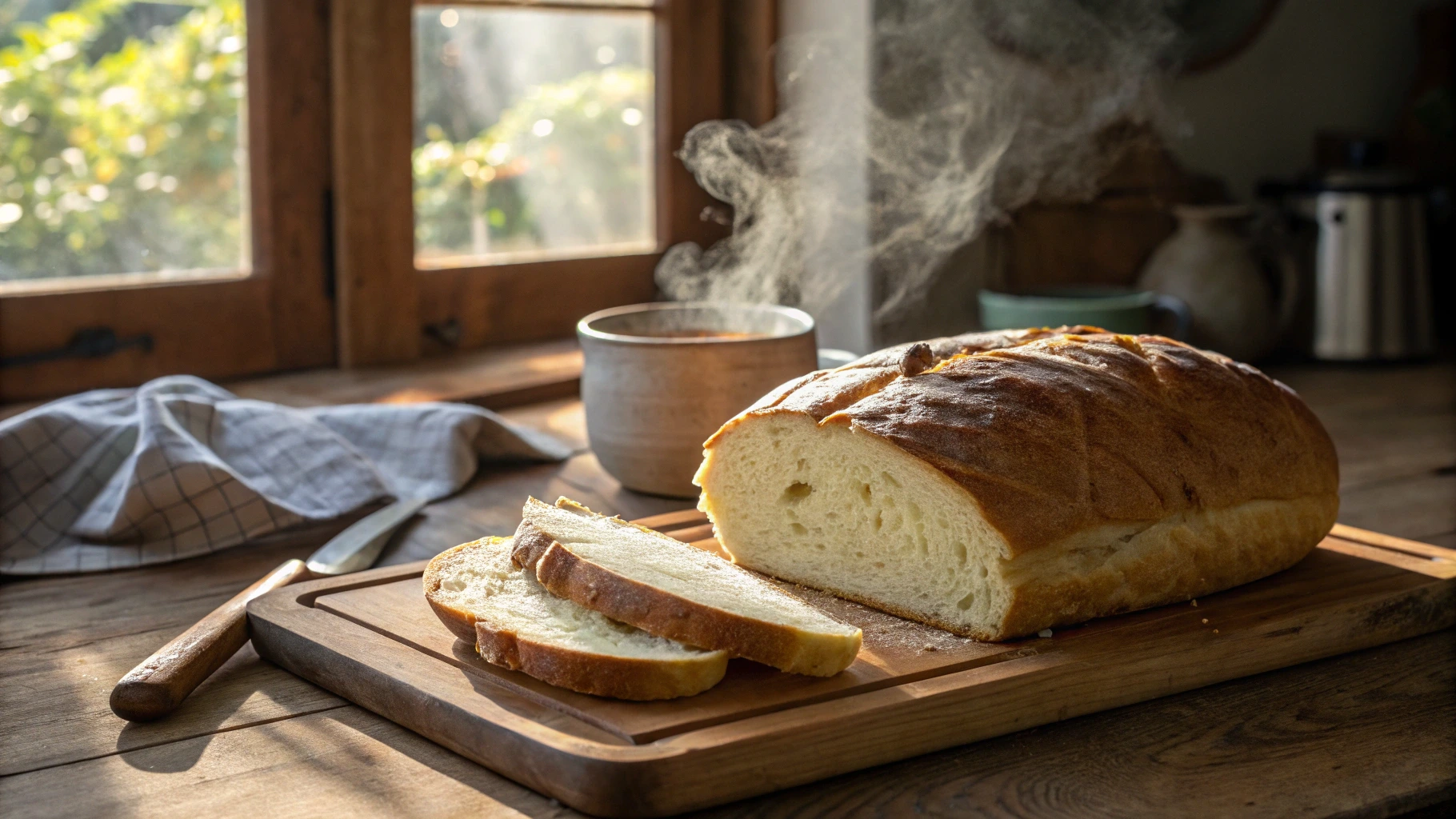
Challenges of Homemade Bread
Despite its many benefits, breadmaking does come with challenges. The most significant hurdle is time. From mixing to baking, a single loaf can take several hours, although much of this is hands-off.
Skill is another factor. Achieving the perfect texture and taste requires practice, and consistency can be elusive for beginners. Moreover, utility costs, such as electricity for baking or water for cleaning, add up over time.
Storage can also be tricky. Unlike store-bought bread, homemade loaves lack preservatives and may stale quickly. To combat this, freezing can help extend freshness.
Although these challenges exist, many find that the rewards outweigh the difficulties.
Is It Cheaper to Make Bread or Buy It? A Comparison
When comparing homemade bread to store-bought options, there are numerous factors to consider, ranging from nutritional content to taste and convenience. Each choice has its own merits, but homemade bread often stands out for those who prioritize health, quality, and personal satisfaction.
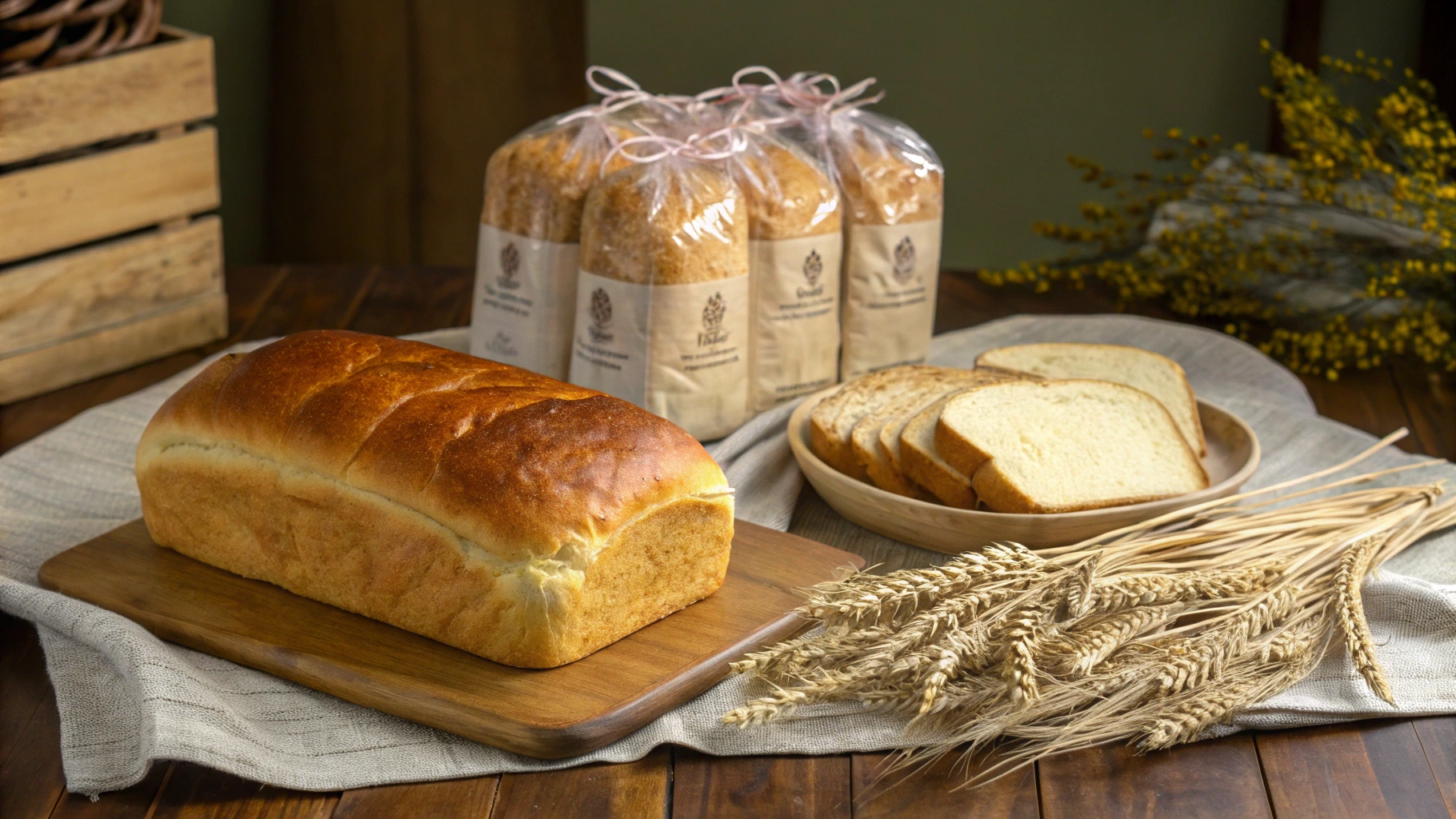
Nutritional Value
Homemade bread generally offers superior nutritional value because you have full control over the ingredients. For instance, you can choose to reduce the amount of sugar or salt to suit your dietary preferences or opt for whole-grain flours to increase the fiber content. Whole-grain and rye flours, in particular, add essential nutrients such as B vitamins, magnesium, and antioxidants, which are often stripped away in the refining process used for store-bought breads. Additionally, homemade bread is free from artificial preservatives, stabilizers, and additives commonly found in commercial loaves, making it a healthier choice for individuals focused on clean eating.
Store-bought bread, while fortified with vitamins and minerals to meet regulatory standards, often contains ingredients like high fructose corn syrup, hydrogenated oils, and emulsifiers. These additives may extend shelf life but can detract from the overall nutritional profile.
Preservatives and Additives
The inclusion of preservatives is one of the defining differences between homemade and store-bought bread. Commercial bread is designed to last longer on the shelf, so it often contains substances like calcium propionate or potassium sorbate to prevent mold growth. While these additives are considered safe in regulated amounts, they may not align with the preferences of those who prioritize natural ingredients.
Homemade bread, by contrast, is free from these chemical preservatives, which means it has a shorter shelf life but is fresher and less processed. This natural quality appeals to health-conscious consumers who want to avoid unnecessary additives in their diet.
Flavor and Texture
The flavor of homemade bread is often far superior to that of store-bought varieties. Freshly baked bread has a richness, depth, and aroma that mass-produced loaves simply cannot replicate. The texture of homemade bread can also be tailored to your preferences, from the airy lightness of ciabatta to the hearty density of whole-grain loaves. Store-bought bread, while consistent in texture, can often feel overly processed or lack the complexity of flavor found in artisanal or homemade options.
For those still wondering Is it cheaper to make bread, experimenting with sourdough starters or specialty flours highlights the cost-effectiveness and creativity of homemade loaves. These creative options make homemade bread more versatile and enjoyable.
Convenience
Where store-bought bread truly excels is in its convenience. Pre-sliced and ready to eat, it’s an ideal choice for people with busy schedules or those who don’t have the time or inclination to bake regularly. With a wide variety of options available in supermarkets, from basic white bread to organic or gluten-free varieties, store-bought bread caters to a range of dietary needs and preferences.
However, this convenience comes at a cost. Many premium breads, such as sourdough or whole-grain varieties, are significantly more expensive than their homemade counterparts. Additionally, store-bought bread may not always be as fresh as desired, and once opened, it often stales quickly despite the presence of preservatives.
Cost Considerations
When comparing the cost of homemade versus store-bought bread, homemade options often come out on top. A typical loaf of homemade bread costs significantly less than most commercial loaves, especially when considering premium or organic brands. Moreover, by baking your own bread, you avoid the hidden costs associated with packaging and marketing, which contribute to the price of store-bought options.
In conclusion, while store-bought bread offers convenience and variety, homemade bread excels in nutritional value, flavor, and customizability. For those with the time and resources to bake regularly, the benefits of homemade bread often far outweigh the convenience of store-bought options.
Practical Tips for Breadmaking: Making It Cheaper to Bake Bread at Home
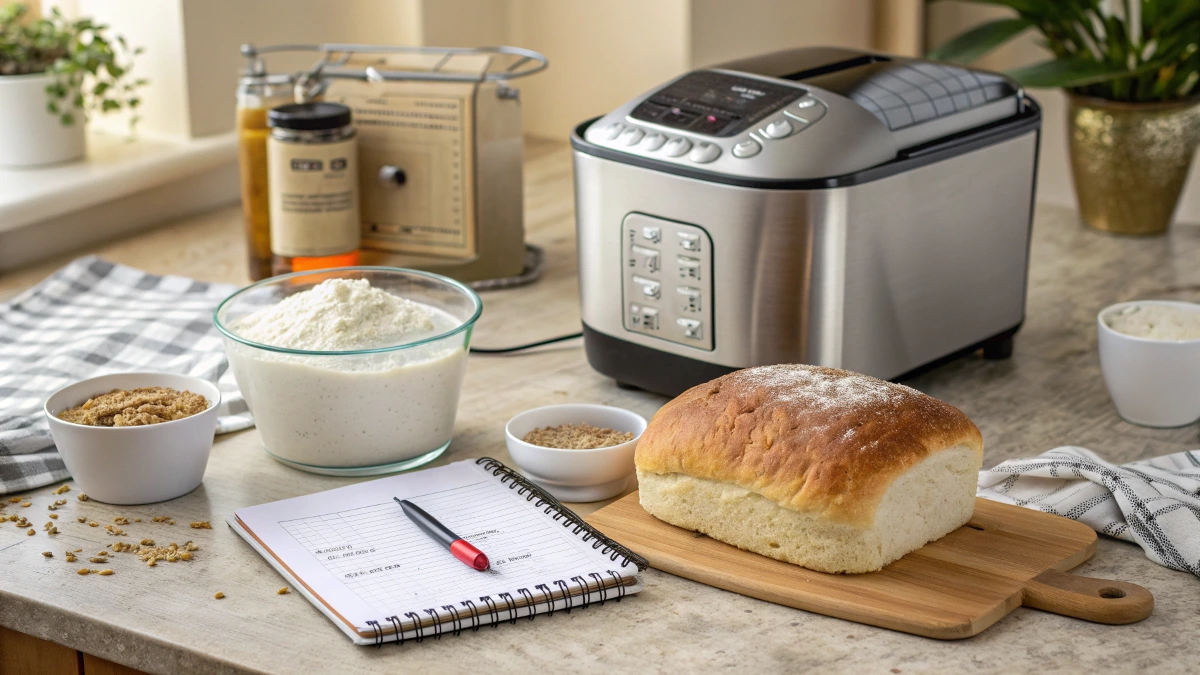
To maximize savings while making bread at home, consider the following tips:
- Buy Ingredients in Bulk: Purchase flour, yeast, and other staples in large quantities to reduce cost per unit.
- Use Energy-efficient Equipment: A bread machine or convection oven uses less energy than traditional baking methods.
- Plan Ahead: Bake multiple loaves at once to save time and energy.
- Reuse Ingredients: Leftover sourdough starter or whey from cheese-making can enhance bread recipes.
These strategies not only save money but also make the process more efficient.
Hidden Costs of Store-Bought Bread: Why It’s Cheaper to Make Bread
Store-bought bread often comes with hidden costs that go unnoticed. Packaging and transport significantly contribute to the overall price. Many brands also invest heavily in marketing, passing those expenses onto consumers.
Premium store-bought loaves, especially artisanal varieties, can cost up to $7–$8 per loaf. By comparison, making similar bread at home costs just a fraction of that amount. These hidden costs highlight why homemade bread is often the more economical choice.
Case Study: Is It Cheaper to Make Bread Than Buy It?
Let’s break down the cost of making a basic white bread loaf at home:
- Flour: $0.40
- Yeast: $0.10
- Salt: $0.05
- Water: $0.01
- Electricity: $0.15
Total Cost: Approximately $0.71 per loaf.
Compare this to the average cost of store-bought white bread, which ranges from $2 to $3. The difference becomes even more pronounced with artisanal loaves, which can cost up to $8.
This case study illustrates that making your own bread is not only cheaper but also offers better quality.
Exploring Specialty Breads
Making specialty breads, like sourdough or rye, at home can be both economical and rewarding. While store-bought versions often cost $5–$8 per loaf, homemade alternatives can be made for less than $2.
Gluten-free or vegan breads are another area where savings are significant. Specialty flours, such as almond or coconut, may seem expensive, but bulk purchases reduce costs over time.
The ability to customize flavors and ingredients further enhances the value of making specialty bread at home.
How to Calculate Your Own Bread Costs
To determine whether it’s cheaper to make your own bread, calculate costs based on:
- Ingredient Prices: Track costs per pound or package and divide by usage.
- Utility Costs: Include electricity or gas usage for baking.
- Equipment Depreciation: Spread the cost of tools over their lifespan.
By factoring in these elements, you’ll gain a clear understanding of your savings.
Is Homemade Bread Worth It? Exploring If It’s Cheaper to Make Bread
While homemade bread often saves money, it’s also about value beyond cost. The quality, taste, and health benefits make it a worthwhile endeavor for many.
However, it’s not always cheaper if you bake infrequently or prefer premium ingredients. In such cases, store-bought bread might be more practical. Ultimately, the decision depends on your priorities and lifestyle.
Frequently Asked Questions (FAQs)
How much money can you save by making your own bread?
Making your own bread can save you significant money, especially if you bake regularly. A typical homemade loaf costs between $0.50 and $1, while store-bought bread can range from $2 to $5. Over time, these savings add up, particularly when comparing premium or artisanal loaves, which often exceed $6–$8 per loaf.
Is making your own bread cheaper in the US?
Yes, making your own bread is generally cheaper in the US, especially when you consider the cost of ingredients and the savings compared to store-bought options. The breakdown is as follows:
- Flour: A 5-pound bag of all-purpose flour costs around $3–$4 and can make 6–7 loaves.
- Yeast: Bulk yeast purchases significantly reduce costs, averaging about $0.10 per loaf.
- Salt and Water: These are negligible costs, adding less than $0.05 per loaf.
Homemade bread typically costs $0.50 to $1 per loaf, while store-bought bread ranges from $2 to $5 for standard varieties. Artisan or specialty loaves, which cost $6–$8 in stores, can be made at home for a fraction of the price.
Although baking bread at home requires an upfront investment in equipment, such as a bread machine or mixing tools, these costs are offset over time. Additionally, homemade bread is healthier and fresher, providing added value beyond the financial savings.
For regular bakers, making bread at home in the US is a cost-effective and satisfying alternative to buying store-bought loaves.
Is it cheaper to use a bread maker or buy bread?
Using a bread maker is cheaper in the long run if you bake frequently. While the initial investment for a bread maker can be £50–£150 ($60–$180), the savings per loaf make up for it over time. A bread maker also reduces the time and effort required, making it more convenient for those with busy schedules.
How long does it take to make bread at home?
Homemade bread typically takes 3–4 hours from start to finish. This includes 1–2 hours for proofing, 30–45 minutes for baking, and some time for preparation and cooling. Bread machines can streamline the process, reducing hands-on time to just a few minutes.
What is the best bread to make at home to save money?
Basic breads like white or whole wheat are the most cost-effective to make at home. They require minimal, inexpensive ingredients and are simple to prepare. Specialty breads, while slightly more expensive, are still cheaper than their store-bought counterparts.
Does homemade bread taste better than store-bought?
Yes, homemade bread often tastes better due to its freshness and the absence of preservatives. You can customize the flavor and texture to your liking, making it more enjoyable than mass-produced store-bought options.
How much does it cost to bake a loaf of bread at home?
The cost to bake a loaf of bread at home typically ranges from $0.50 to $1, depending on the ingredients used. Basic white or whole-wheat bread is the cheapest, while specialty breads, such as gluten-free or sourdough, may cost slightly more due to premium ingredients.
By addressing these common questions, it’s clear that making your own bread is not only economical but also offers better quality, taste, and customization compared to store-bought options.
Conclusion
In summary, Is it cheaper to make bread? Absolutely, as homemade bread is both cost-effective and a healthier alternative to store-bought options. While challenges exist, the benefits often outweigh them, making it a rewarding choice for many households. Whether you’re baking basic loaves or exploring specialty breads, the answer to Is it cheaper to make your own bread? is a resounding yes for those who enjoy the process and value quality.
If you’re ready to try making your own bread, just click on the link below for the complete recipe.
